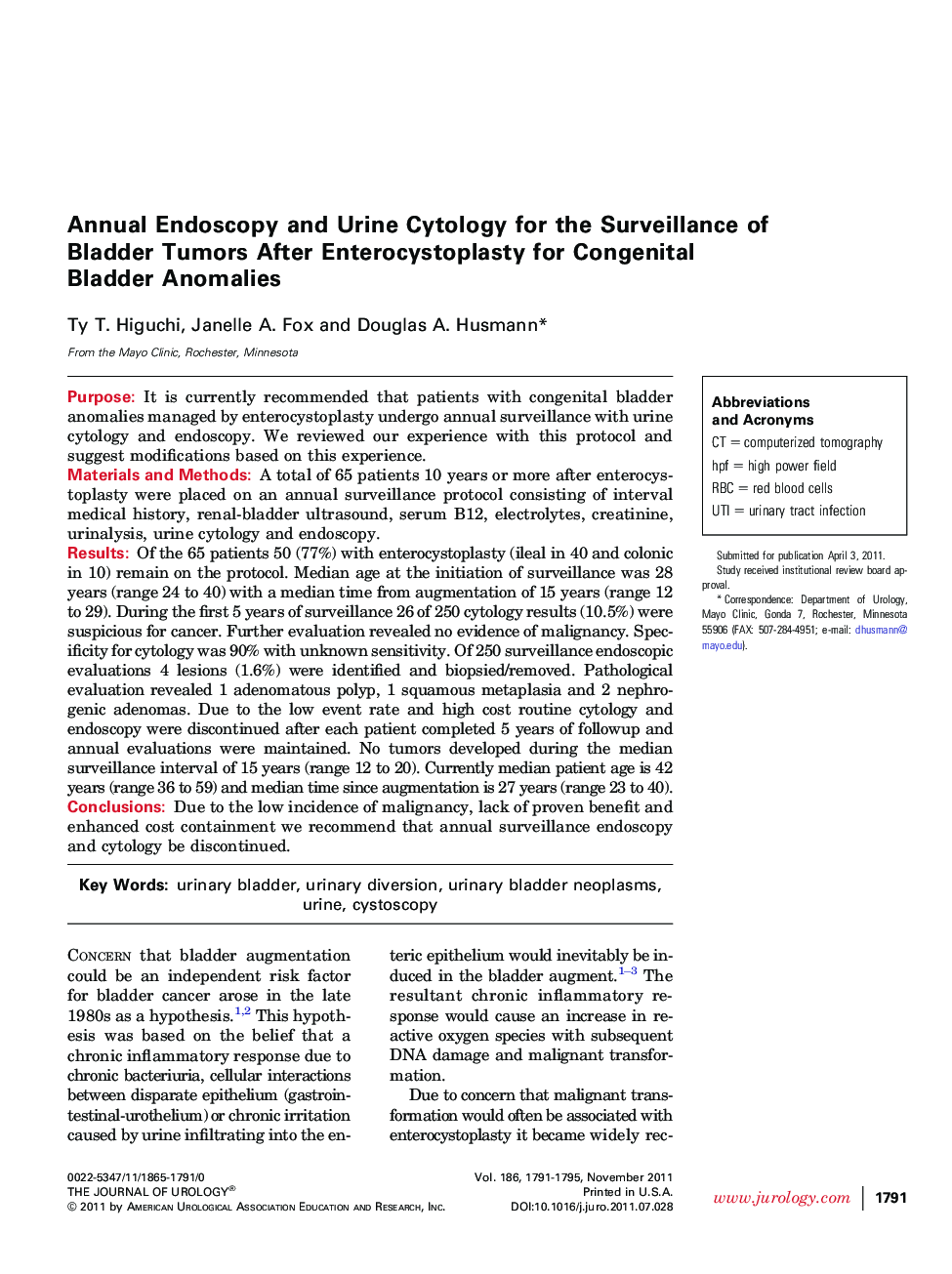| Article ID | Journal | Published Year | Pages | File Type |
|---|---|---|---|---|
| 3864354 | The Journal of Urology | 2011 | 5 Pages |
PurposeIt is currently recommended that patients with congenital bladder anomalies managed by enterocystoplasty undergo annual surveillance with urine cytology and endoscopy. We reviewed our experience with this protocol and suggest modifications based on this experience.Materials and MethodsA total of 65 patients 10 years or more after enterocystoplasty were placed on an annual surveillance protocol consisting of interval medical history, renal-bladder ultrasound, serum B12, electrolytes, creatinine, urinalysis, urine cytology and endoscopy.ResultsOf the 65 patients 50 (77%) with enterocystoplasty (ileal in 40 and colonic in 10) remain on the protocol. Median age at the initiation of surveillance was 28 years (range 24 to 40) with a median time from augmentation of 15 years (range 12 to 29). During the first 5 years of surveillance 26 of 250 cytology results (10.5%) were suspicious for cancer. Further evaluation revealed no evidence of malignancy. Specificity for cytology was 90% with unknown sensitivity. Of 250 surveillance endoscopic evaluations 4 lesions (1.6%) were identified and biopsied/removed. Pathological evaluation revealed 1 adenomatous polyp, 1 squamous metaplasia and 2 nephrogenic adenomas. Due to the low event rate and high cost routine cytology and endoscopy were discontinued after each patient completed 5 years of followup and annual evaluations were maintained. No tumors developed during the median surveillance interval of 15 years (range 12 to 20). Currently median patient age is 42 years (range 36 to 59) and median time since augmentation is 27 years (range 23 to 40).ConclusionsDue to the low incidence of malignancy, lack of proven benefit and enhanced cost containment we recommend that annual surveillance endoscopy and cytology be discontinued.
